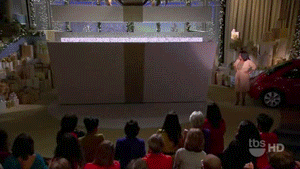The culture is vast and people are truly weird
Some things I’ve recently learned that it might benefit you to know:
1.) Did you know that, after Bruce Lee died, there was a cottage industry of films “starring” the recently-late martial arts star? I didn’t, but they exist (and are sometimes called “Bruceploitation“). For instance, witness The Dragon Lives Again, aka Deadly Hands of Kung Fu, aka 李三腳威震地獄門 (1977), the entirety of which is currently up at YouTube watch it quickly:
In it, according to le Wikipedia,
The deceased Lee meets a number of pop-culture icons, including Dracula, James Bond, Zatoichi, Clint Eastwood, The Godfather, Laurel and Hardy, The Exorcist, and even 1970s soft-porn character Emmanuelle.
Animated Gifs as Cinema
I was planning to put up the next installment in my experimental fiction series today (part 1, part 2), but school has interfered. (I’m writing a paper on Dickens’s use of the narrative present in Great Expectations, plus grading 40-something research papers written in response to Hanna Rosin’s The End of Men: And the Rise of Women.)
In the off chance that you’d like to read something new by me, I recently published an article at the film site Press Play, “Are Animated Gifs a Type of Cinema?” Since then, Landon Palmer has responded with an article at Film School Rejects (“Animated Gifs are Cinematic, But They’re Much More Than Cinema“), as has Wm. Ferguson at the 6th Floor, the New York Times Magazine‘s blog (“On the Aesthetics of the Animated GIF“). I’m planning a follow-up post as well as an interview with Eric Fleischauer and Jason Lazarus, the directors of the gif anthology film twohundredfiftysixcolors, whose premiere I managed to catch a few weeks back. And the Press Play article is itself a follow-up to two articles I posted at Big Other in early 2011: “How Many Cinemas Are There?” and “Why Do You Need So Many Cinemas?”
I’m only just beginning my studies on the gif, so I appreciate any and all feedback.
Art’s a Fucking Mess
My friend Tadd over at Big Other has a post up about why Plato wanted to kick all the poets out of his ideal republic. And I’m no philosopher. But my understanding has long been that Plato’s problem with poets/art (besides the whole mimesis “copy of a copy” thing) is that art is messy, uncontrollable.
Like, consider this:
Someone—some artist somewhere—decided to make this. Is it good? Bad? Funny? Sick? Evil? Juvenile? Calculated? Hip? Clever? Stupid? Immoral? Amoral? Sure—it’s all those things, and more! It supports a variety of readings. In fact, the better an artwork is (I think this is a pretty OK one), the more irreducible it tends to be (at least, according to certain lines of aesthetic reasoning that I think Tadd would agree with).
Good art disrupts the social order. It wakes you up, shocks you, makes you feel alive—it makes you see the world again, differently. Bad art is boring, predictable, prescribed, a weak illustration of what you’ve already been thinking. (That’s my problem with so many depictions of September 11th, Roxanne—they reduce that day into something so digestible, so mundane, it’s as though it never happened.)


